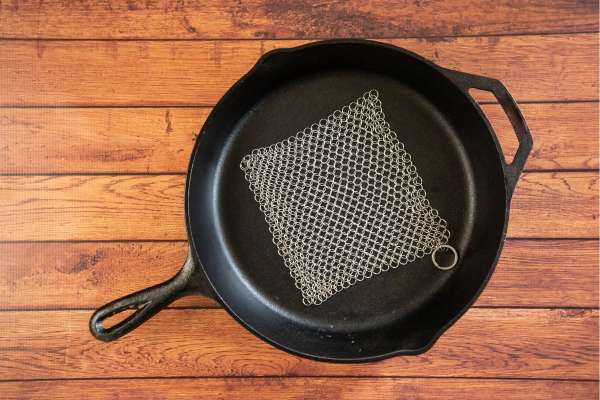Hard anodized cookware is a popular choice among both professional chefs and home cooks due to its durability and superior cooking performance. The anodization process enhances the cookware’s strength, making it scratch-resistant and long-lasting. Its non-stick surface and even heat distribution make cooking more efficient and enjoyable. This guide explores the features, benefits, and maintenance tips for hard anodized cooking utensils, helping you understand why it’s a valuable addition to any kitchen.
1. Understanding Hard Anodization
Anodization Process
Hard anodization is a specialized process that enhances the natural oxide layer on aluminum cookware. This electrochemical process involves immersing aluminum in an acid electrolyte bath and then passing an electric current through it. This creates a hard, durable surface that is thicker than the original metal. Unlike regular cooking utensil manufacturing, which might involve simple coating or painting, anodization bonds the aluminum oxide layer directly to the metal, ensuring a non-reactive, scratch-resistant, and corrosion-resistant surface.
Materials Used
Hard anodized cooking utensils are primarily made from high-grade aluminum. This material is preferred due to its excellent heat conductivity and lightweight nature. The anodization process transforms aluminum into a non-stick, non-reactive surface, making it ideal for cooking a variety of dishes without the risk of food sticking or reacting with the cookware. The result is a highly durable and efficient cooking tool that enhances the overall cooking experience.
2. Features of Hard Anodized Cookware

Hard anodized cooking utensil is renowned for its exceptional durability, making it a top choice for both professional kitchens and home cooks. Its scratch-resistant properties ensure that the surface remains smooth and unmarred even with frequent use, offering longevity that surpasses many other cookware types.
The non-stick surface is another significant advantage, allowing for effortless food release and easier cleanup. To maintain this non-stick quality, it is recommended to avoid using metal utensils and abrasive cleaning tools. Additionally, this kitchenware provides superior heat distribution, ensuring that heat spreads evenly across the cooking surface.
3. Benefits of Hard Anodized Cookware
This cookware offers numerous health and safety benefits, primarily due to its non-reactive nature. Unlike some other materials, it doesn’t react with acidic foods, making it safe for everyday cooking.
This ensures that your meals are free from harmful chemicals or unwanted flavors. Additionally, this cooking utensil is lightweight and easy to handle, enhancing its ease of use. It’s compatible with various cooking methods and stovetops, adding to its versatility in the kitchen. When it comes to cost-effectiveness, this cookware stands out as a long-term investment.
4. Comparing Hard Anodized Cookware with Other Types
While stainless steel is prized for its durability and non-reactive surface, it often requires more effort to clean and may not offer the same non-stick convenience. On the other hand, cast iron cookware excels in heat retention and distribution, making it ideal for slow-cooking dishes.
However, its heavyweight and need for regular seasoning can be cumbersome for some users. Ceramic and other non-stick cooking utensils provide an easy-to-clean surface and lightweight handling, but they may lack the surface durability of hard anodized options.
Additionally, ceramic coatings can sometimes contain chemicals that pose health concerns, whereas this kitchenware is free from such risks, making it a safer choice for health-conscious cooks.
5. Maintenance and Care

Proper maintenance and care are crucial for extending the lifespan of this cookware. Cleaning tips include using mild dish soap and a soft sponge to preserve the non-stick surface.
Avoiding harsh chemicals and abrasive cleaning tools will prevent damage and maintain the cookware’s integrity. For storage, it’s best to place this cooking utensil on a shelf or in a cabinet with adequate padding between pieces to prevent scratches and dents. Using pan protectors or placing a soft cloth between stacked items can also help maintain their pristine condition.
6. Common Myths and Misconceptions
There are several common myths and misconceptions about this cookware that can lead to confusion. One prevalent myth is that this cooking utensil is unsafe due to the use of aluminum. However, the anodization process seals the aluminum, making it non-reactive and safe for cooking.
Another misconception is that the non-stick surface of this cookware is prone to peeling or flaking. In reality, when properly maintained, this kitchenware offers exceptional durability and longevity. Some also believe that this cookware is difficult to clean, but with proper care and the use of mild cleaning agents, it can be easily maintained.
Conclusion
Hard anodized cooking utensil stands out for its durability, non-stick properties, and excellent heat distribution. Its non-reactive surface ensures safe cooking with acidic foods, making it a health-conscious choice. Additionally, the cookware’s ease of use, lightweight design, and compatibility with various cooking methods enhance its appeal. Proper maintenance and care can significantly extend its lifespan, offering a cost-effective investment for any kitchen. By dispelling common myths and understanding its true benefits, it’s clear that this kitchenware is a superior option for both professional chefs and home cooks alike.





